10 Giant Menorahs That Will Light Up for Hanukkah in NYC
From Brooklyn to the Bronx, we’ve rounded up the most exciting giant menorahs that will light up throughout the next eight evenings!


It’s easy to forget that subway tokens were only discontinued in 2003, as it feels much longer since New Yorkers have fished through their wallets for a token. As children, we regarded tokens with such awe. One hallowed, albeit cumbersome, object was the key to transporting you anywhere in the city within a train’s grasp. At some point in the midst of the transformation to MetroCards, that magical aura was lost, now lying in the realm of memorabilia (token jewelry, anyone?) and fond-yet-distant memories.
In the subway‘s infancy, it only cost five cents to get on a train, and in the pre-token days you would just insert a nickel to pass through. In 1948 the fare was raised to ten cents, so the New York City Transit authority re-outfitted the turnstiles to accept dimes. It wasn’t until the city increased the fare to fifteen cents that they encountered a problem. The lack of a fifteen cent coin led to the creation of the subway token.
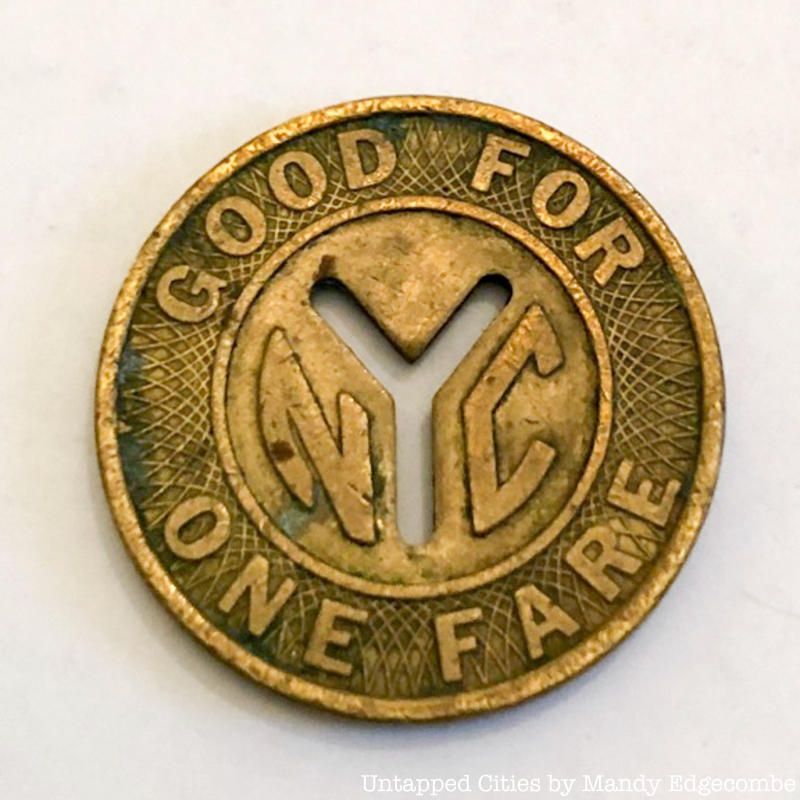
The release of the 1970 token was met with a fare increase to thirty cents. By the end of the decade the far went up to fifty cents. The 1970 token was designed to be larger than its 1953 counterpart.
A celebratory limited edition token was released in 1979:
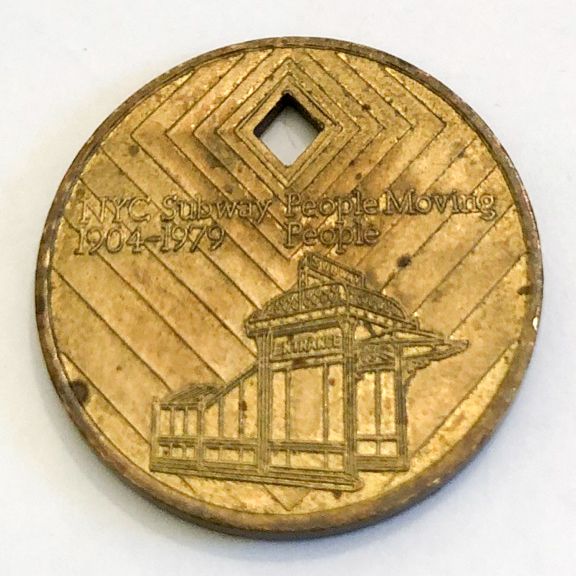
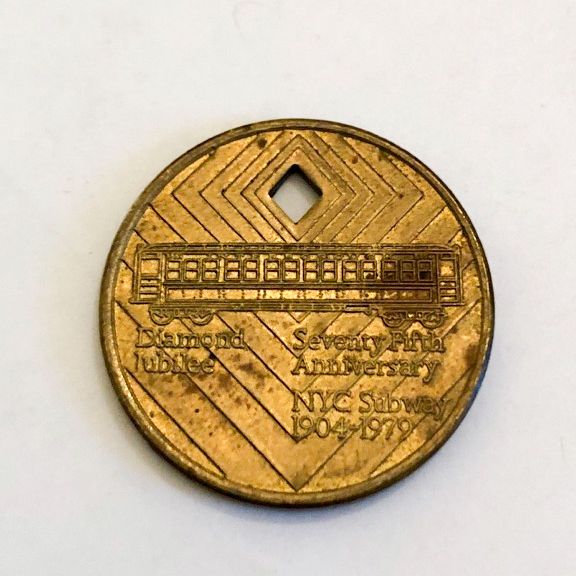
The 1980 token was released in tandem with a fare hike to sixty cents. The 1980 token introduced the first major change to the initial token design, with a stamped “Y” in the NYC inscription rather than a cut-out “Y”.
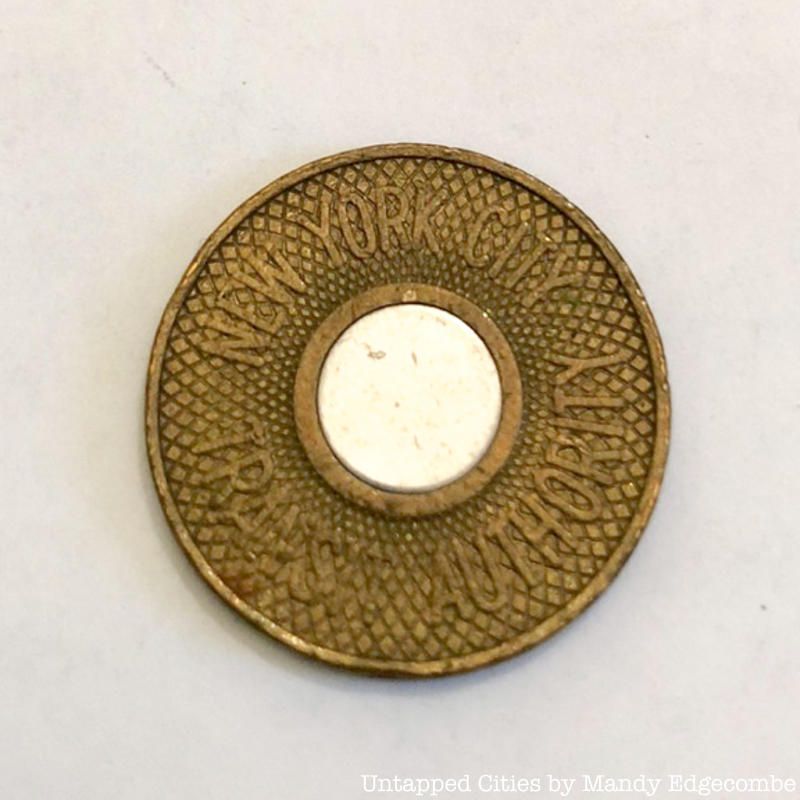
The “bull’s eye” token saw a few variants, the one shown is the last one, lasting from 1992-1995. One of the other variants, released in 1988, had the words “Archer Ave Extension 12-88” in lieu of the “Good for one fare” slogan to celebrate the opening of the Archer Avenue Extension in Queens.
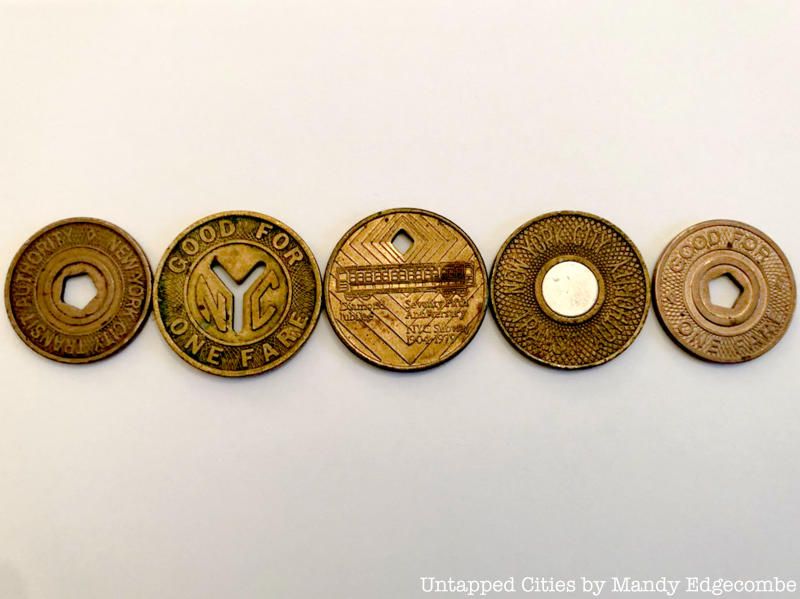
This final design was used until tokens were phased out in 2003. The center was cut out in the shape of a pentagon. The MetroCard was introduced in 1994. The New York Transit Museum has a collection of “slugs” that were used by riders to avoid payment of fares, including foreign coins, washers, amusement tokens and tokens from other fare systems.
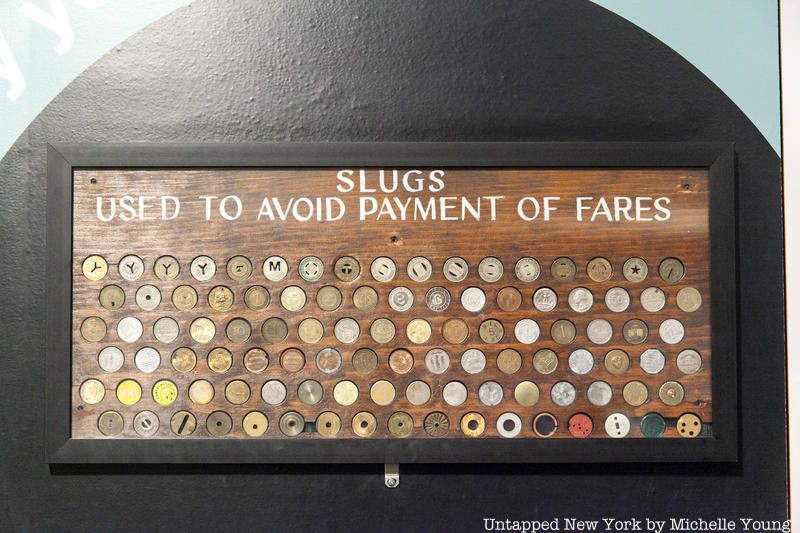
For more than a decade, the MTA has been planning to completely phase out the MetroCard with options to pay by tapping your credit card, debit card or MTA card linked to a bank account. All subway stations and buses are now equipped with contactless readers that let you utilize your contactless bank card, smart device, or OMNY card at the turnstile, bypassing the need for a MetroCard vending machine. Overall, the days of the MetroCard are numbered.
The subway agent booths seems to be going the way of the token and the MetroCard as well—disappearing. For now, you can buy vintage NYC subway tokens at the MTA Transit Museum Store (or on E-bay).
Next, read about the top 20 secrets of the NYC subway!
Subscribe to our newsletter